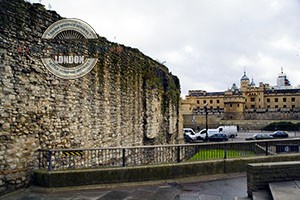Four Roman Sites in Great Britain that are worth a visit
Today there is an abundance of Roman sites in the United Kingdom that are open to the public. In today’s article we will turn your attention towards some of these sites as we are certain that you will want to visit them.
 The London Wall was built by the Romans during the 2nd and 3rd century to provide protection to the River Thames port town of Londinium (modern London). The wall was maintained the city’s governors until the 18th century. Today most of the wall is gone and only parts of it can be seen. Despite the ruinous condition of the wall the remaining portions of the London Wall are one of London’s most noted touristy attractions and tend to attract both local and foreign visitors by the number.
The London Wall was built by the Romans during the 2nd and 3rd century to provide protection to the River Thames port town of Londinium (modern London). The wall was maintained the city’s governors until the 18th century. Today most of the wall is gone and only parts of it can be seen. Despite the ruinous condition of the wall the remaining portions of the London Wall are one of London’s most noted touristy attractions and tend to attract both local and foreign visitors by the number.
The Temple of Mithras which is also known as the London Mithraeum is another Roman site which is located in the capital city. The site is situated in Walbrook, a street in the City of London and was discovered during the construction of an edifice in 1954. The discovery of the temple is recognized as the most famous 20th century Roman discovery in London. Since the discovery of the site over 10.000 items have been excavated and have been displayed throughout the numerous museums of London and Great Britain.
The Mamucium which is more commonly known as the Mancunium was a Roman fort built during the 1st century. The fort’s purpose was garrisoned by a cohort of auxiliary soldiers whose purpose was to guard the road that connected the cities of Deva Victrix (modern Chester) and Eboracum (modern York). During the Industrial Revolution the ruins of the fort were levelled and damaged severely by the construction of the Rochdale Canal and the Great Northern Railway. Since them the site has been recognized as a Scheduled Ancient Monument and was been partially restored.
Longovicium was an auxiliary fort in the Roman province of Britannia Inferior. The remains of the fort of situated at about eight miles from the city of Durham and five miles from the Consett. The fort dates back to the 2nd century and was abandoned during the 5th century. An interesting thing about the fort of Longovicium is that it had an abundance of water supply which was provided by two aqueducts and numerous water reservoirs. The remains of the auxiliary fort are one of North England’s most visited landmarks.
These are only four of the numerous Roman sites that are spread throughout the United Kingdom. So make sure that you take your family on a road and visit some of these sites once your man and van project is over. This would be a great way to recharge the batteries after a long and stressful relocation. Speaking of stressful relocation, know that you can go through a stress-free move if you use professional man and van services.
So if you don’t want or have the time to plan and conduct your removal, keep calm and simply contact a licensed moving company to lend you a hand.
About author
-

-
Jeremy Oliver
Previously serving as a logistics coordinator, Jeremy's comprehensive understanding of the industry gives him the ability to translate complex procedures into easy-to-understand blog posts. He has a particular knack for tackling the intricacies of London's removals scene, from the congested roadways to the unique challenges of navigating historic neighborhoods. As an authentic Londoner, Jeremy combines practical knowledge with his inherent love for the city, offering readers not only information on man with van removals but also local insights and valuable tips.


